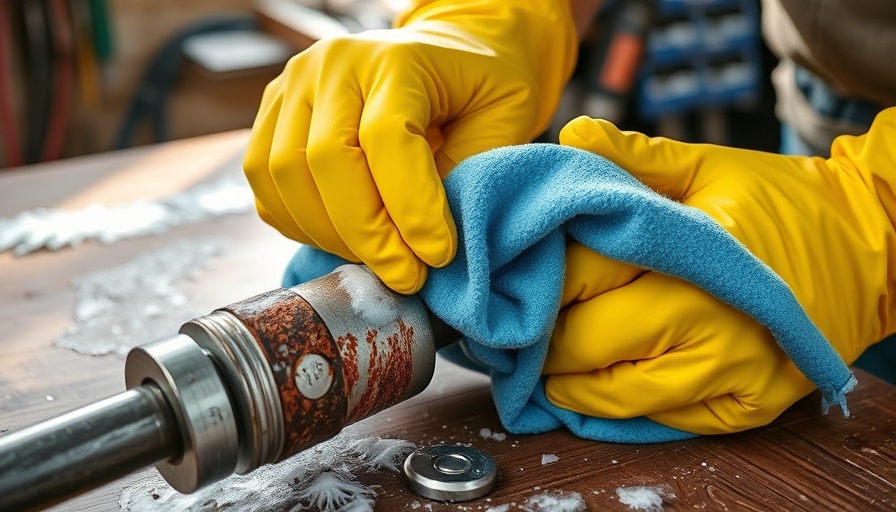
Mastering the Art of Rust Removal from Metal
Rust can be more than just a pesky stain on your beloved tools and appliances; it can diminish their effectiveness and even lead to costly replacements. Whether you’re dealing with rusted garden tools or metal furniture, understanding how to eliminate rust is essential for homeowners looking to maintain their possessions and improve their aesthetic appeal. This article explores various effective methods to remove rust from metal, drawing insights from trials and reliable sources.
Understanding Rust: What You Need to Know
Rust forms through a natural process called oxidation, where moisture and oxygen interact with iron and other metals. Over time, this leads to corrosion, altering not only the appearance but also the functionality of your tools. However, with a bit of effort and the right techniques, you can restore your items to their original glory.
Rusted? Here's Your DIY Toolkit
Rather than spending money on expensive solutions, consider these five practical methods that draw from common household items:
1. Vinegar Bath: The Soak Method
One of the simplest ways to deal with rust involves soaking the affected items in white vinegar overnight. The acetic acid in vinegar helps dissolve the rust, making it easier to scrub away the next day using steel wool or a metal brush. Ensure that you rinse well afterward to prevent any further corrosion.
2. Baking Soda: The Scrub Strategy
Baking soda is a staple in many homes and doubles as an effective rust remover. Mix it with water to create a paste and apply it to the rusted area. Leave it for an hour and scrub with steel wool. This method is best for minor rust spots and can yield satisfying results without harsh chemicals.
3. Potato and Dish Soap: A Surprising Combo
It may sound unusual, but raw potatoes contain oxalic acid, which can help remove rust. Cut a potato in half, apply some dish soap to the cut side, and rub it on the rusty surface. It’s a gentle method perfect for small objects but may not be as effective against larger rust patches.
4. Lemon and Salt: Nature’s Power Duo
For a fresh-scented approach, use a lemon and salt mixture. Generously coat the rusted area in salt, then squeeze lemon juice over it and let it sit for a while. The lemon juice’s acidity works with the abrasive nature of the salt to break down the rust quickly and effectively.
5. Citric Acid: For Serious Cases
If you’re tackling substantial rust, citric acid is an excellent option. Dissolve a few tablespoons of citric acid in hot water, submerge the rusted item, and allow it to soak. This method is slightly more intensive but produces great results for heavily corroded tools.
Beyond DIY: Commercial Solutions
Sometimes stubborn rust demands professional-grade methods. Look into rust converters and removers available at hardware stores. These products can neutralize rust or eliminate it entirely, offering an alternative for those who need immediate results.
Home Maintenance Made Simple
Maintaining your metal items doesn’t have to be daunting. With these accessible tips, you’ll not only save money but also learn valuable skills that enhance your home. Keeping your tools and appliances in tip-top shape not only preserves their functionality but also enhances your living environment, allowing you to tackle various projects without worry.
Conclusion: No one needs to settle for rusted tools or tarnished metal surfaces. By employing these effective methods, you'll not only restore your items but also gain insights into proper maintenance that can prolong their lifespan. Don’t let rust win — take action today!
 Add Row
Add Row  Add
Add 




Write A Comment